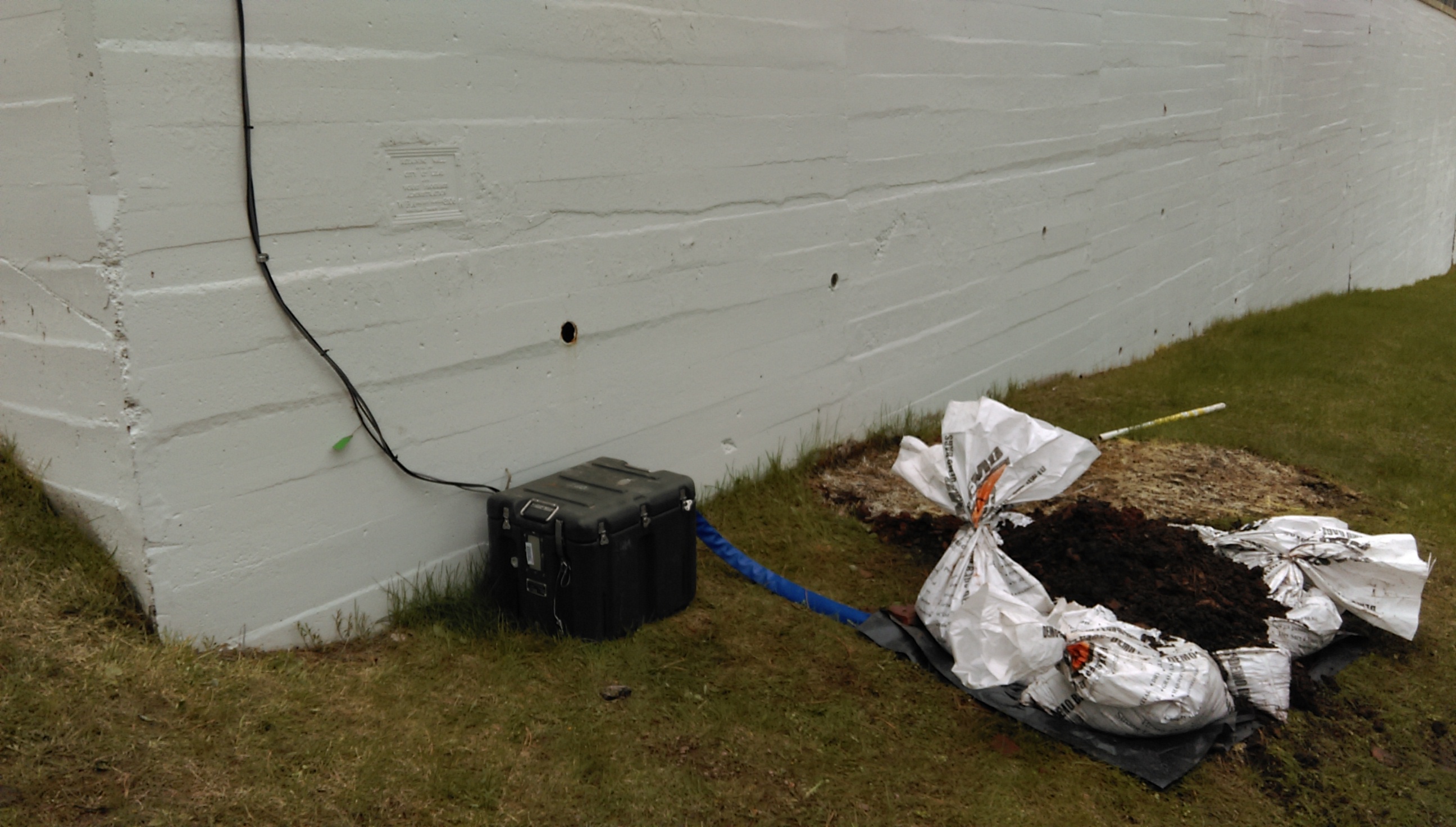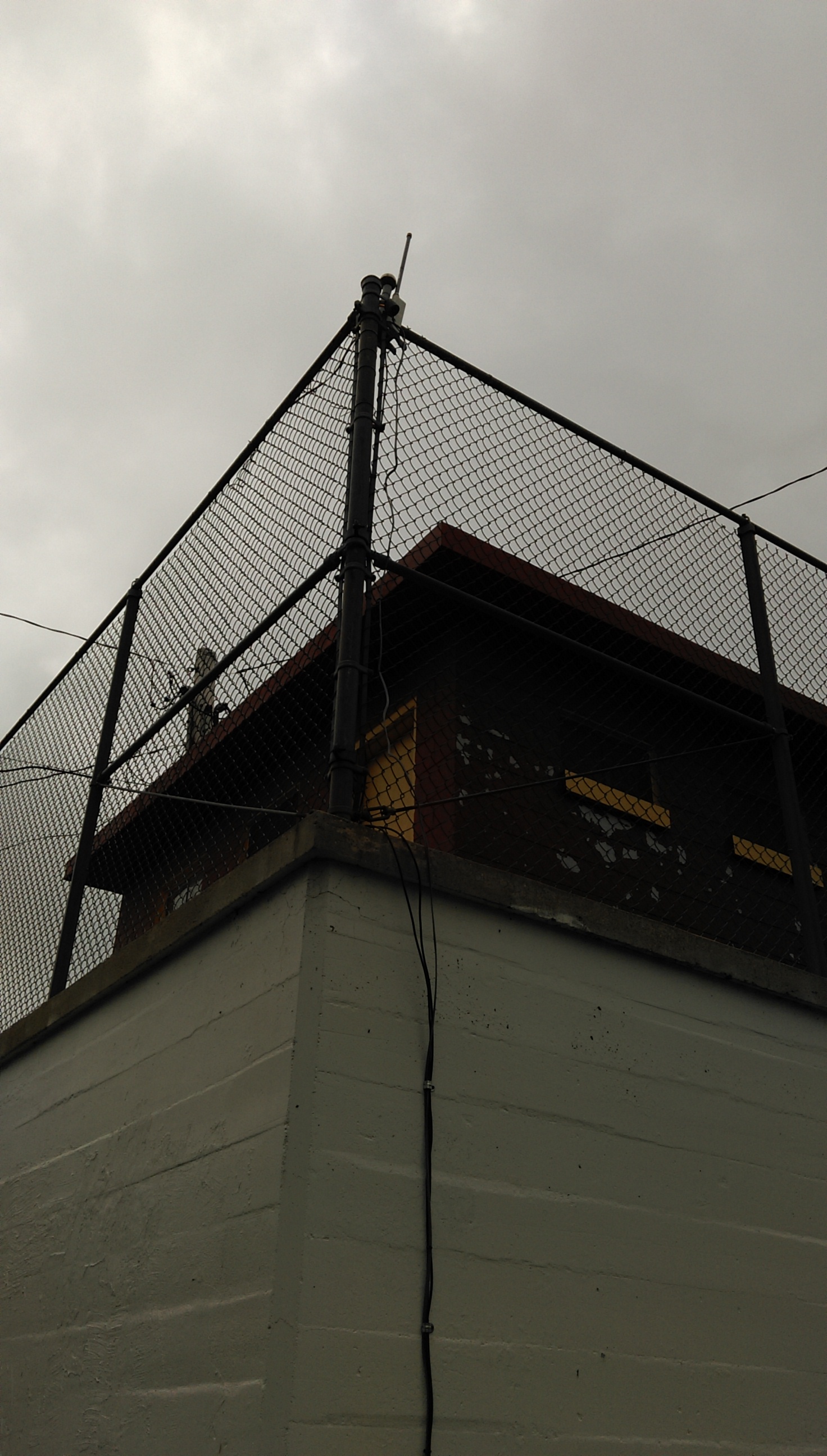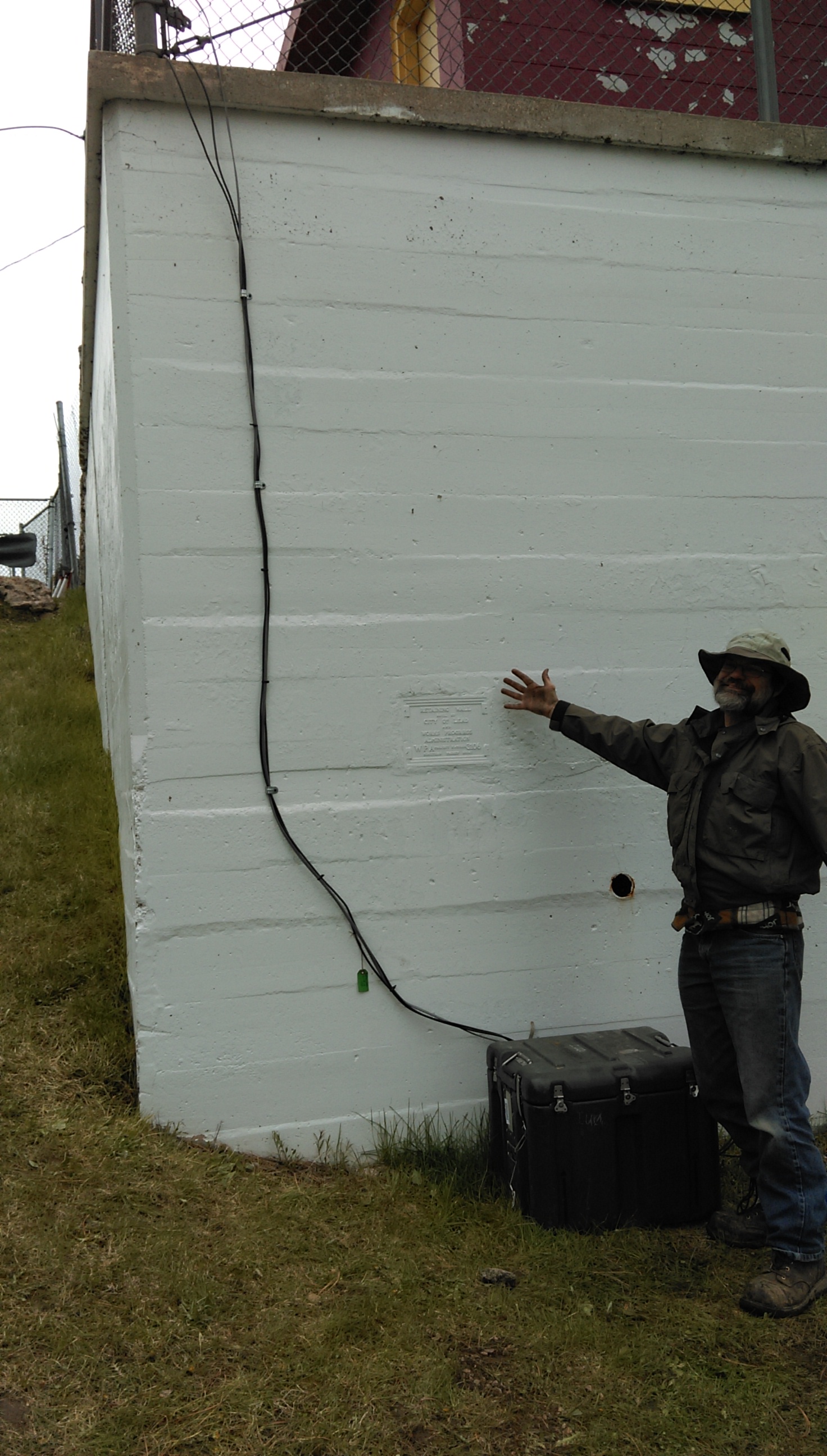Table of Contents
LHS
Surface site near the Lead-Deadwood High School.
Install sheet: lhs.pdf
Site information
| Q330 serial | 010000069A4065D7 |
| Q330 tag | 187 |
| Q330 IP | 172.24.40.30 |
| Sensor type | STS-2 |
| Sensor serial | 60108 |
| Baler tag | 05569 |
| Wilan IP (at station) | 172.24.40.31 |
| Wilan IP (at station) | 172.24.40.33 |
| Computer IP | 172.24.40.32 |
Site log
| Date | Comments | Update by |
|---|---|---|
| 05/19/2015 | Tanner, Daniel, Gary, and Pat installed the full station. There is a connectivity problem between the radios. A little bit of data seems to get in here and there, but not much of it is getting to the computer. | Tanner |
| 05/22/2015 | We installed new radios but the problem is not resolved. We want to put the radio at the site down by the data acquisition system and on a pole so it points directly at the radio in the computer lab, but that will have to wait until the next trip. | Tanner |
| Sept. 2015 | Better radios installed at some point on the September trip by Gary et al. | Tanner |
| 12/03/2015 | We have been seeing some issues with timing - the error sometimes creeps up to 20 us or more. May just be that the GPS antenna doesn't have a clear view of the sky. | Tanner |
Gary's notes from the station removal (2016/09/26): “To make a long story short we discovered somewhat accidentally that the metal we used for the concrete form there [at LHS site] was apparently steel, not aluminum. Most roof flashing sold today is aluminum as it lasts longer and the expense compared to steel is tiny. I don't remember considering this, anyway, when we bought that stuff - an example of what assumptions does to you. We realized this when the orientation we measured with the orientation rod on the STS2 an what we measured on the pad differed by more than 20 degrees. By siting on the same line from the top of the vault the orientation we measured was reasonably consistent with the orientation we measured with the pin. Hence, for the remainder of the demob we used the siting from above method. This decreased precision a lot, but improved accuracy since measurements on the pad were clearly biased.
3. Something I wish I knew how to document with the data is that the accuracy of LHS orientation is questionable. Daniel noticed the orientation measurements wer a bit unstable as moving around a small amount seemed to change the answer. I think there is a pretty good physical explanation - recall that site is adjacent to a high retaining wall with a large steel fence at the top. The wall itself almost certainly contains a lot of steel rebar. The fence is a bit far away, but a large magnetic object. In any case, the orientation of that site is subject to a potential bias of several degrees. There is no way to ever recover this but we need all remember LHS may have an orientation bias. ”


